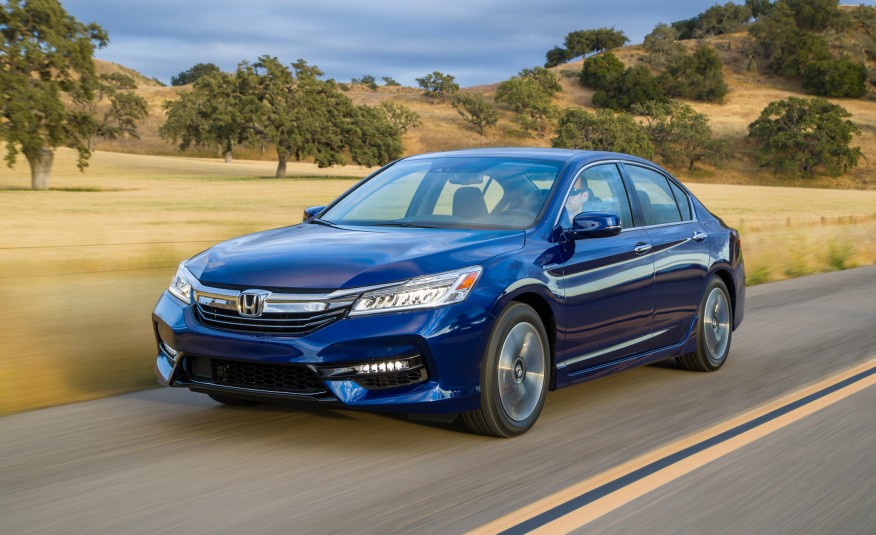Japanese carmaker Honda released late last year the midsize sedan 2017 Honda Accord Hybrid which is actually a major step for its overall move to electrified vehicles.
Honda now has an expanding range of hybrids, plug-in hybrids, fuel-cell models, and battery electrics and it is expected that by 2030, Honda is looking at having two-thirds of its fleet electrified, reports Car and Driver.
Apparently, the Japanese carmaker is not too concern with how fuel prices, government regulations, and customer needs would shape up by that year, in making its rather ambitious projection, note some critics.
The 2017 Honda Accord Hybrid came out after a one-year hiatus for the model, whose last variant was released in 2015.
What has been catching attention for the 2017 Honda Accord Hybrid is its powertrain which uses a gasoline engine to power the vehicle in some situations but without a transmission, notes the Green Car Reports.
The Accord’s hybrid system
The two-motor hybrid system is paired with a 2.0-liter four-cylinder engine that uses the lean Atkinson Cycle combustion sequence for the highest output using the least fuel.
The Accord Hybrid offers three driving modes. The first is the EV Drive, which uses only electric power to drive the front wheels, provided that there is sufficient charge in the lithium-ion battery pack.
The second is the Hybrid Drive, which allows for electric-only running using the propulsion motor, while the gasoline engine recharges the battery pack, using the second motor as a generator.
And there is also the Engine Drive, which is the only mode that allows the gasoline engine to directly power the front wheels. In this mode, a clutch that is disengaged in the other modes locks the engine and propulsion motor together.
The engine spins the propulsion motor, both providing power to the wheels and using that motor as a generator to recharge the battery pack.
The absence of a transmission means that the gear ratio is fixed, so the powertrain can only operate in this way at certain speeds, usually higher speeds.
The gear ratio in engine drive mode is similar to that of a six-speed manual Honda Accord in its highest gear.
Best fuel economy for hybrid sedans
The 2017 Honda Accord Hybrid is rated at 48 mpg combined by the EPA, which makes it among the best fuel economy of hybrid mid-size sedans.
The car itself is a mildly-updated version of the 2014 and 2015 Accord Hybrid but is now being sold in much larger numbers.
Honda has said it will target annual sales of more than double the 14,000 Accord Hybrids that were sold in 2014.
The previous Honda Accord Hybrid received generally positive reviews, but limited availability turned away many potential buyers, who reportedly waited of up to several months for the car, with some of them finally giving up.
The new hybrid benefits from the updates in which the cars were facelifted, lightened, and structurally stiffened.
Additionally, hybrid production was moved from Ohio to Japan to expand the global supply and more than double the number of cars available. The 2017 Honda Accord Hybrid is now sold in all 50 states of the US.
To create the new, better hybrid, Honda engineers gave it a more powerful 2.0-liter Atkinson-cycle four-cylinder engine; two smaller, lighter, and more energetic AC motor/generators; a more compact lithium-ion battery pack and electronic control unit; significant aerodynamic improvements and reduced friction; and a wealth of driver assists and creature comforts.
The one major carryover is the basic powertrain arrangement, which Honda describes as a two-motor hybrid-drive system combines combustion and electric-energy conversion with fixed drive ratios.
However, some critics note that there are driving behaviors that diminish the 2017 Honda Accord Hybrid’s desirability.
The electrically assisted steering, while nicely weighted and responsive off-center, provides no hint of road feel or feedback.
